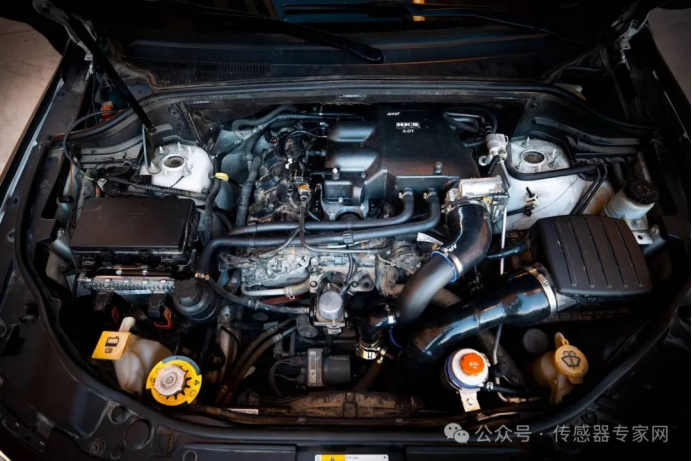In the heart of modern cars - inside the engine, a seemingly inconspicuous but crucial component is silently working, which is the crankshaft position sensor. As a key component of the engine management system, the crankshaft position sensor not only monitors the operating status of the engine, but also directly participates in core control processes such as ignition and fuel injection. This article will take you on a deep exploration of the mysteries of crankshaft position sensors, revealing their working principles, types, importance, and applications in modern automotive technology.

一、 Definition and function of crankshaft position sensor
The crankshaft position sensor, as the name suggests, is a specialized sensor used to determine the current position of the crankshaft rotation (i.e. the crankshaft angle) and the engine speed. It is usually installed at the front and rear ends of the crankshaft near the large flywheel, in the middle of the crankshaft, or inside the distributor, providing key information to the engine electronic control unit (ECU) by accurately sensing the rotational state of the crankshaft. These information include crankshaft angle, speed signal, and piston position of each cylinder, which are important basis for engine ignition sequence, injection timing, idle control, fuel evaporation control and other processes.
二、 Types and working principles of crankshaft position sensors
There are three main types of crankshaft position sensors: magneto electric induction, Hall effect, and photoelectric. Although photoelectric sensors have gradually been phased out due to technological limitations, the first two types are still widely used in modern automobiles.
1. Magnetoelectric induction type: This sensor consists of permanent magnets, coils, and connector plugs. When the crankshaft rotates, the target wheel rotates with the crankshaft, changing the magnetic field strength inside the coil, thereby generating induced current. ECU can accurately determine the crankshaft angle and speed by analyzing the changes in these induced currents.
2. Hall effect type: Hall effect sensors use the Hall effect to generate voltage pulse signals corresponding to the crankshaft angle. It is usually composed of Hall chips and permanent magnets. When the blades of the impeller (rotating synchronously with the crankshaft) enter or leave the gap between the magnet and the Hall element, a voltage signal will be generated or disappeared, and the ECU will judge the position and speed of the crankshaft based on this.
三、 The importance of crankshaft position sensor
The importance of crankshaft position sensors is reflected in the following aspects:
1. Ignition and fuel injection control: By accurately sensing the crankshaft angle and speed, sensors provide the ECU with control basis for ignition and fuel injection, ensuring that each cylinder ignites and injects at the correct time, thereby improving the engine's power and economy.
2. Engine condition monitoring: The crankshaft position sensor can also monitor whether the engine is misfiring and running smoothly, providing key data for fault diagnosis and warning.
3. Chassis control coordination: The crankshaft position sensor also plays an important role in the transmission, steering, suspension, and ABS systems. For example, in the transmission, it can work together with speed sensors, temperature sensors, etc. to achieve precise matching of gear shifting control.
4、 Application of crankshaft position sensor in modern automotive technology
With the continuous advancement of automotive technology, crankshaft position sensors are also constantly being updated and replaced. The crankshaft position sensor in modern cars not only has
higher accuracy and reliability, but also integrates more functions such as adaptive learning and fault diagnosis. In addition, with the popularity of electric and hybrid vehicles, crankshaft position sensors are playing an increasingly important role in motor control and energy recovery.
五、 Conclusion
The crankshaft position sensor, this seemingly simple component, is a crucial part of modern automotive engine management systems. It provides a solid foundation for engine ignition, fuel injection, condition monitoring, and chassis control with its unique working principle and precise performance. With the continuous development of automotive technology, crankshaft position sensors will also continue to evolve, providing more intelligent and efficient control solutions for future cars. Let's look forward to more exciting performances of crankshaft position sensors in future automotive technology together!
Source: Sensor Expert Network. If there is any infringement, please contact us for deletion



